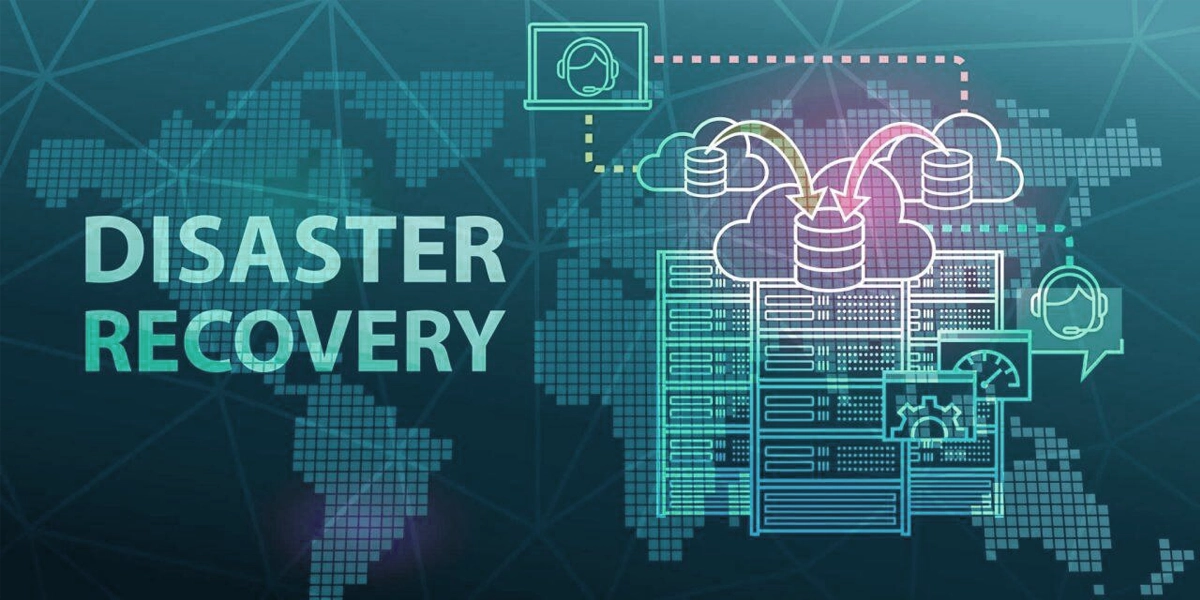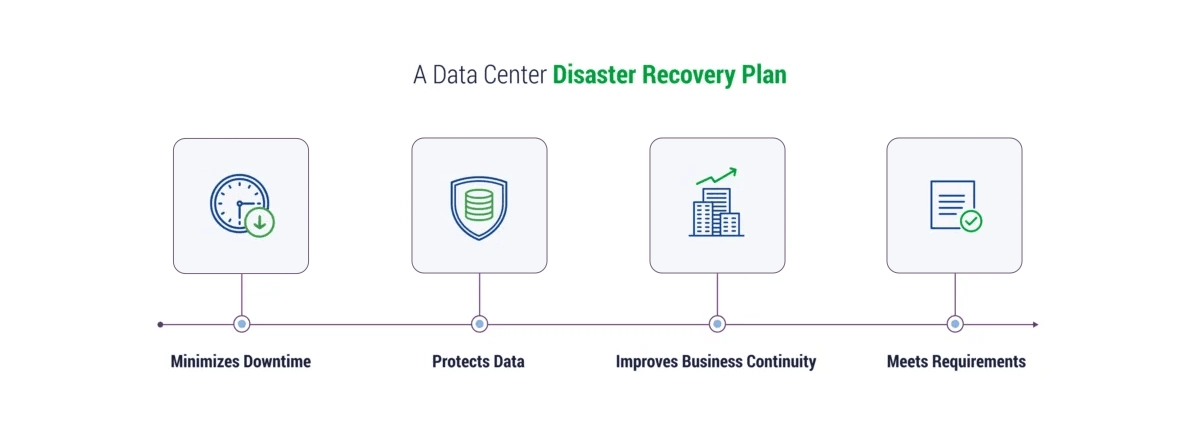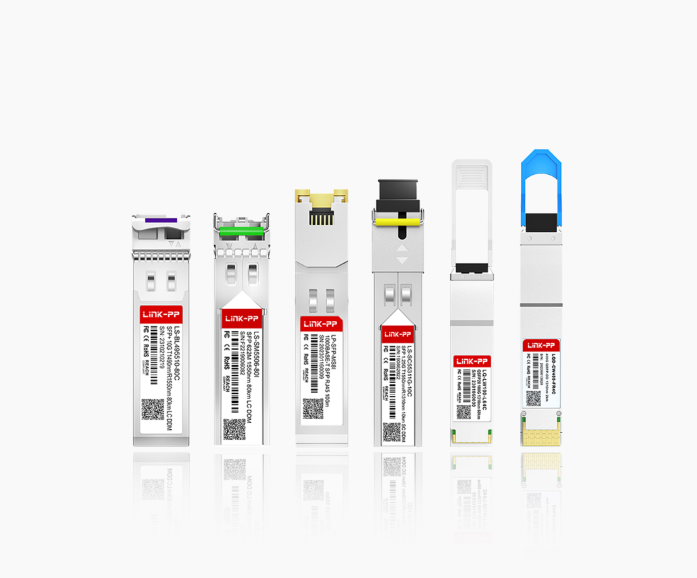
In our hyper-connected world, data is the lifeblood of modern enterprise. A momentary lapse in data center connectivity can translate into millions in lost revenue, eroded customer trust, and significant operational disruption. While most organizations have a disaster recovery (DR) plan, many overlook a critical component: the resilience of the underlying optical network that carries this precious data.
This blog post delves into why a robust Data Center Disaster Recovery Solution is incomplete without a hardened optical transport layer and how the right technology, including high-performance transceivers, can be your ultimate insurance policy.
📊 Key Takeaways
A disaster recovery solution lets your business bounce back fast from trouble. It helps cut down on lost time and lost data.
Test your disaster recovery plan often to spot weak areas. This makes sure your systems work well when real problems happen.
Add redundancy in your network to make backup paths. This keeps your data safe if one path stops working.
Watch your network all the time to find problems early. This helps keep your data center connections strong.
Set clear recovery goals like RTO and RPO to lower risks. This helps your business keep running without big problems.
📊 Why Standard DR Plans Aren't Enough
Traditional disaster recovery often focuses on server replication, backup power, and geographic redundancy. However, if the high-speed fiber optic links connecting your data centers are a single point of failure, your entire DR strategy is built on shaky ground. An effective optical network disaster recovery plan must address:
Fiber Cuts: The most common cause of widespread outages.
Hardware Failures: Switches, routers, or line card malfunctions.
Natural Disasters: Events that can destroy entire physical pathways.
Cyberattacks: Targeted strikes on network infrastructure.
📊 The Pillars of a Resilient Optical Network DR Strategy
Building a bulletproof optical network for disaster recovery rests on three core principles:
1. Diverse Pathing & Geographic Redundancy 🗺️
The goal is to eliminate any single point of failure. This means ensuring your primary and secondary (or tertiary) data centers are connected via physically separate fiber routes. Don't just rely on different conduits; use entirely different paths that are unlikely to be affected by the same event (e.g., one going north and the other south of a city).
2. Intelligent Automation & Rapid Failover ⚡
When a fault occurs, recovery time is everything. Modern Optical Transport Network (OTN) systems equipped with advanced control planes can detect a failure in milliseconds and automatically reroute traffic to a protected path. This automated disaster recovery for optical links ensures business continuity with minimal human intervention.
3. High-Capacity, Scalable Infrastructure 📈
Your DR network must not only be reliable but also capable of handling your full production load—and future growth. As data volumes explode, a scalable optical network disaster recovery plan ensures that your failover environment won't become a bottleneck.
📊 Key Technologies Powering Modern Optical DR
Implementing these pillars requires a suite of advanced technologies:
OTN Switching: Provides granular, sub-wavelength switching for efficient bandwidth management and stronger service-level agreements (SLAs).
ROADM (Reconfigurable Optical Add-Drop Multiplexer): Enables flexible, remote lightpath reconfiguration without manual intervention, which is crucial for dynamic restoration.
Coherent Optics: The technology behind modern high-speed DWDM (Dense Wavelength Division Multiplexing) transmissions, allowing massive amounts of data to be sent over a single fiber over long distances.
📊 The Unsung Hero: High-Reliability Optical Transceivers
Often overlooked, optical transceivers are the critical endpoints that launch and receive the light signals carrying your data. In a DR scenario, their performance and reliability are non-negotiable. A failing transceiver can be as catastrophic as a fiber cut.
When selecting transceivers for mission-critical data center interconnect (DCI) links, you need components that guarantee:
Low Latency: For real-time application performance.
High Stability: Consistent performance under varying temperatures and conditions.
Longevity: Reduced risk of failure over time.
Compatibility: Seamless operation with your existing DWDM and switching equipment.
Investing in high-quality, certified optics is not an area for compromise. For instance, leveraging a 400G QSFP-DD ZR+ module in your DR links ensures you have a dependable, high-performance transceiver capable of transmitting data over 80km+ with excellent signal integrity, making it an ideal choice for robust metropolitan area network (MAN) interconnects between data centers.
📊 Building Your DR Plan: A Comparative Look

A one-size-fits-all approach doesn't work for DR. Your strategy will depend on your Recovery Time Objective (RTO) and Recovery Point Objective (RPO).
DR Strategy | Typical RTO/RPO | Optical Network Implication | Best For |
|---|---|---|---|
Cold Standby | Days / Hours | Minimal pre-provisioned bandwidth. | Non-critical archives, development environments. |
Warm Standby | Hours | Pre-provisioned, lower-speed links that can be scaled up. | Critical applications that can tolerate some data loss. |
Hot Standby / Active-Active | Minutes / Seconds | Fully redundant, equal-capacity links with automatic failover. | Mission-critical systems, financial transactions, real-time databases. |
Multi-Cloud Active | Near-Zero / Zero | Complex mesh of high-speed, low-latency optical connections to various cloud providers. | Hyper-scale, globally distributed applications requiring ultimate resilience. |
Secure Your Data Lifeline with LINK-PP
Designing and implementing a fail-safe disaster recovery solution for optical networks is a complex task that demands expertise and reliable partners. From core switches to the transceivers that make the connection possible, every component must be engineered for resilience.
At LINK-PP, we specialize in providing end-to-end optical networking solutions built for the most demanding environments. Our high-performance optical transceivers, like the 400G QSFP-DD ZR+ and our comprehensive range of 100G/200G DWDM modules, are designed to deliver the stability and performance your disaster recovery strategy depends on.
Don't let a network failure become a business catastrophe.
➡️ Ready to future-proof your data center interconnects? Explore our solutions and consult with our experts to build a resilient, high-capacity optical DR network. [Contact the LINK-PP Team Today]
📊 FAQ
What is a disaster recovery solution for optical networks?
Disaster recovery solutions help protect your data. They keep your interconnect working if something goes wrong. If you lose data or your interconnect stops, these solutions help you fix it fast. Your business stays safe and your data center stays strong with these solutions.
How does data center interconnect support disaster recovery?
Data center interconnect connects your sites together. You can move data between places using interconnect. If one site has a problem, you send data to another site. Interconnect helps keep your data safe and your business working. You can trust interconnect for quick recovery.
Why do you need redundancy in your solutions?
Redundancy means you have backup paths for your interconnect. If one path breaks, your data uses a different path. You do not lose any data. Redundant solutions keep your interconnect strong. You avoid downtime and keep your data safe with these solutions.
How often should you test your disaster recovery solutions?
You should test your solutions two times every year. Testing helps you find weak spots in your interconnect. You make sure your data is safe. You use practice drills to get ready for problems. Regular tests keep your solutions and interconnect ready for real trouble.
What are the main benefits of real-time data backup in disaster recovery solutions?
Real-time backup copies your data right away. You do not lose important data. Your interconnect keeps working. You can get your data back fast with these solutions. Real-time backup helps you feel calm. You know your data is safe and your interconnect is strong.




